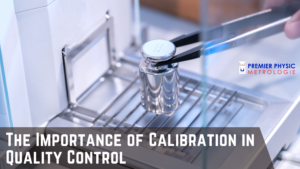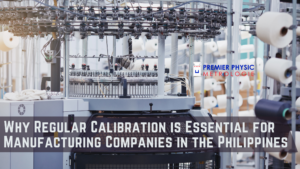In the realm of metrology and measurement, accuracy and reliability are non-negotiable. Calibration, the process of comparing a measurement device to a known standard, is the cornerstone of ensuring these qualities. However, the precision of calibration is heavily influenced by environmental factors, with temperature being a primary concern. This article delves into the critical role of temperature control in calibration processes, exploring why it’s indispensable for achieving accurate and consistent measurements across various industries.
The Fundamental Relationship: Temperature and Measurement Accuracy:
Temperature affects the physical properties of materials, including dimensions, electrical resistance, and density. Measurement instruments, being constructed from these materials, are inherently susceptible to temperature variations. Even minute temperature fluctuations can introduce significant errors in measurements, especially for high-precision applications.
Why Temperature Control Matters in Calibration:
- Material Expansion and Contraction:
- Explanation: Materials expand when heated and contract when cooled, affecting the dimensions of measurement instruments and standards.
- Impact: Inaccurate measurements due to thermal expansion or contraction.
- Example: A steel ruler calibrated at 20°C will provide inaccurate measurements at 30°C due to thermal expansion.
- Instrument Stability and Drift:
- Explanation: Temperature variations can cause instruments to drift from their calibrated state, leading to inconsistent readings.
- Impact: Reduced instrument stability and increased measurement uncertainty.
- Example: An electronic balance calibrated at a stable temperature may exhibit drift if subjected to temperature fluctuations.
- Reference Standard Accuracy:
- Explanation: Reference standards, used as the basis for calibration, are also affected by temperature.
- Impact: Inaccurate calibration due to temperature-induced errors in reference standards.
- Example: A calibrated weight may have a different mass at a different temperature.
- Measurement Uncertainty:
- Explanation: Temperature variations contribute to measurement uncertainty, which is the range of values within which the true measurement lies.
- Impact: Increased measurement uncertainty and reduced confidence in measurement results.
- Example: A temperature-sensitive measurement may have a wider uncertainty range if performed in an uncontrolled environment.
- Regulatory Compliance:
- Explanation: Many industries have regulations that specify temperature control requirements for calibration processes.
- Impact: Non-compliance with regulations can lead to penalties and product recalls.
- Example: Pharmaceutical manufacturers must adhere to strict temperature control guidelines for calibration of analytical instruments.
- Consistency and Repeatability:
- Explanation: Temperature control ensures consistent and repeatable calibration results.
- Impact: Improved reliability and reproducibility of measurements.
- Example: Calibrating instruments in a stable temperature environment ensures that measurements are consistent over time.
Optimal Temperature Environments for Calibration:
To minimize temperature-induced errors, calibration processes should be performed in controlled environments that meet the following criteria:
- Stable Temperature:
- Requirement: Maintain a constant temperature within a specified tolerance range.
- Implementation: Utilize temperature-controlled chambers or rooms with precise temperature regulation.
- Uniform Temperature Distribution:
- Requirement: Ensure uniform temperature distribution throughout the calibration environment.
- Implementation: Employ forced air circulation systems or other methods to minimize temperature gradients.
- Low Temperature Gradients:
- Requirement: Minimize temperature gradients between different parts of the calibration environment.
- Implementation: Use insulated chambers or rooms to reduce heat transfer.
- Humidity Control (if applicable):
- Requirement: Control humidity levels, especially for instruments sensitive to moisture.
- Implementation: Utilize dehumidifiers or humidifiers to maintain desired humidity levels.
- Clean Air:
- Requirement: Maintain clean air to prevent contamination of instruments and standards.
- Implementation: Use air filtration systems to remove dust and other particles.
- Vibration Isolation:
- Requirement: Minimize vibrations that can affect measurement accuracy.
- Implementation: Utilize vibration isolation tables or other methods to reduce vibrations.
Best Practices for Temperature Control in Calibration:
- Environmental Monitoring:
- Practice: Continuously monitor temperature and humidity using calibrated sensors.
- Benefit: Provides real-time data on environmental conditions and ensures compliance.
- Instrument Stabilization:
- Practice: Allow instruments and standards to stabilize at the calibration temperature before performing measurements.
- Benefit: Minimizes temperature-induced errors.
- Temperature Compensation:
- Practice: Apply temperature compensation algorithms to correct for temperature-induced errors.
- Benefit: Improves measurement accuracy.
- Calibration Procedures:
- Practice: Follow established calibration procedures that specify temperature control requirements.
- Benefit: Ensures consistency and compliance.
- Documentation:
- Practice: Document all calibration activities, including environmental conditions, instruments used, and results.
- Benefit: Provides traceability and evidence of compliance.
- Regular Calibration of Sensors:
- Practice: Regularly calibrate temperature and humidity sensors to ensure accuracy.
- Benefit: Ensures reliable environmental monitoring.
- Training:
- Practice: Train personnel on the importance of temperature control and proper calibration procedures.
- Benefit: Minimizes human error.
Industries Where Temperature Control is Critical:
- Pharmaceuticals: Ensuring accurate drug analysis and manufacturing processes.
- Aerospace: Maintaining precision in aircraft instrumentation and manufacturing.
- Electronics: Calibrating sensitive electronic components and test equipment.
- Manufacturing: Ensuring dimensional accuracy and quality control.
- Metrology: Maintaining traceability and accuracy of measurement standards.
- Automotive: Calibrating sensors and control systems for vehicle performance and safety.
The Future of Temperature Control in Calibration:
Advancements in sensor technology, automation, and data analysis are continuously improving temperature control in calibration processes. Future developments will likely include:
- Smart Sensors: Real-time monitoring and automated adjustments of temperature.
- AI-Powered Calibration: Automated calibration procedures and data analysis.
- Remote Calibration: Calibrating instruments remotely using internet-connected devices.
- Self-Calibrating Instruments: Instruments that automatically calibrate themselves.
Key Takeaways:
- Temperature control is essential for accurate and reliable calibration.
- Temperature variations can introduce significant errors in measurements.
- Optimal temperature environments are crucial for minimizing these errors.
- Best practices for temperature control include environmental monitoring, instrument stabilization, and temperature compensation.
- Temperature control is critical in various industries, including pharmaceuticals, aerospace, and manufacturing.
- Advancements in technology are continuously improving temperature control in calibration.
By understanding the importance of temperature control and implementing best practices, organizations can ensure the accuracy and reliability of their measurements, leading to improved product quality, safety, and compliance.




